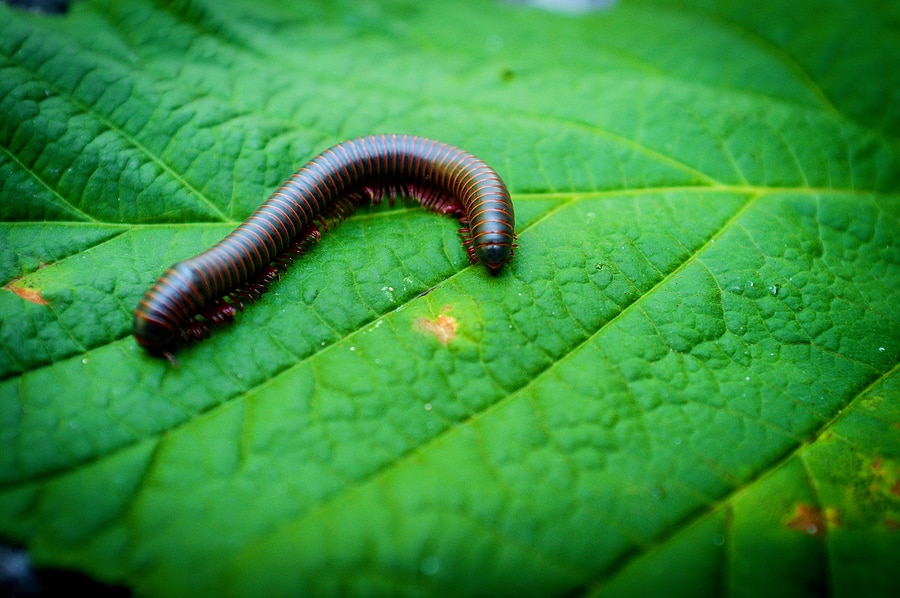READY TO GET STARTED?
REQUEST A FREE ESTIMATE
Fill out the form below or call (888) 466-7849 for a free, no-obligation estimate.

Millipedes are common pests that can be found just about anywhere in the United States. Most of the time they can be found outside under leaves, mulch, compost, and rocks, although occasionally they will come indoors – in search of water during droughts or in search of shelter after heavy rains. They can usually be found infesting basements, garages, and crawlspaces. If you find a millipede in your home, there’s a good chance they are breeding somewhere on your lawn.
Millipedes are decomposers with their diet primarily consisting of damp, decaying plant material. Because of this, they are quite beneficial to have in your garden. Millipedes are harmless to humans but they can become a nuisance if they are present in large numbers. Prevention is the best start to millipede control. Keep millipedes away from your home with these millipede prevention tips.
What attracts millipedes is moisture, especially in crawlspaces and around foundations. Keep gutters clear and in good repair. Consider installing gutter guards to help prevent clogs. Make sure downspouts are pointed away from foundations and use splash blocks to keep water away from foundation walls. Consider installing tiles or drains or sloping the ground so water drains away from foundations. Repair any leaky pipes, appliances, or faucets. Reduce the humidity in your crawlspace and basement with dehumidifiers, sump pumps, or soil covers.
If there is nowhere for millipedes to breed or hide, they can’t get into your home. Keep millipedes out by removing mulch, leaves, grass clippings, boards, woodpiles, rocks, boxes, etc. from your yard, especially if they are near foundations. If you are unable to remove them completely, try to elevate them off the ground. Try not to overmulch your flowerbeds.
Millipedes thrive in the moist layer of thatch that can accumulate on lawns. Keep your grass mowed short and dethatch the lawn as this will make it less appealing to millipedes. Try not to overwater your lawn. Don’t water at night since there is no sun to help evaporate the moisture.
Millipedes can get into your home through cracks in the exterior. Seal any cracks or openings in the outside foundation. Use thresholds or door sweeps on all exterior doors. Caulk the outer edges of the thresholds. Seal any expansion joints where sunrooms, patios, and sidewalks are next to foundations. Seal any expansion joints or gaps at the bottom of basement walls.
Millipedes can only survive for a few days once they get inside your home. The conditions indoors are too dry for them to be able to live long periods of time. The infestation will be short lived and eventually they will die off. Once this happens, you can sweep them up with a broom or vacuum them up.
While millipedes don’t cause damage to homes and aren’t harmful to humans, they can become quite a nuisance when they infest in large numbers. If you have a problem with millipedes or any other pests, contact a professional pest control company who can provide you with the most up-to-date prevention and treatment techniques.
What to Know About Fleas & Ticks
Commercial Mosquito Control: A No Spray Way for Your Business
Carpenter Ants: The Silent Destroyers
Make Checking The Bed Bug Registry Part of Your Spring Break Plans